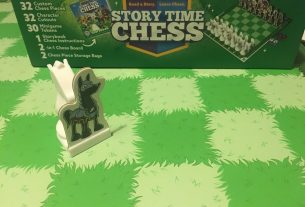A recent GeekMom conversation turned to gardening when GeekMom Ariane shared this:
I just bought my first house and we have our very first yard. We’ve been taking a lot of plants out (that were dead or not looking too great or too dangerously thorny for a 2-year-old to play around) and replacing with fruits and vegetable plants. My husband even built us a little raised vegetable garden box. We really like the idea of having a very functional garden that will produce lots of food, though our yard isn’t very large. We have NO CLUE what we’re doing.
I’ve admitted here on GeekMom that I don’t have a geeky passion for Star Wars or Star Trek or gaming, but you want to talk gardening? I can discuss the finer points of Green Zebra, Mortgage Lifter, and Goliath tomatoes. I can identify lady bug eggs and tree hopper nymphs and a pickleworm. Pruning fruit trees? Organic pest control? Compost? Be still my heart. While I’m still learning about gardening in this new climate of mine, I can certainly answer some of Ariane’s questions.
Where should I plant my garden?
Situate your garden in the sun. Vegetables love sunshine. If you don’t have at least six to eight hours of sun, you’ll need to limit your garden to plants that will tolerate less sun like lettuce, greens, peas, and scallions.
What about dirt? Do I need anything special?
Soil is key – but don’t let that scare you away. If you’re growing in raised beds or planters, start with a good quality planting mix. I like Fox Farm brand because they do not include any biosolids (aka sewer sludge). If you’re planting directly in the ground, there are two options. One is to turn over the soil, working in some rich compost or rotted manure (never use fresh manure). You can use a rototiller for this, or a shovel. Just be sure that the planting area doesn’t have a bunch of big clumps. The other way to start is with a lasagna bed. This is a method of layering materials on top of the ground and planting right in it. This is a no-till method and a bit easier on the back.
My yard isn’t huge. What plants will give me the most produce in a small amount of space?
This really depends on your region and what grows well there (your local Cooperative Extension office is a great source for this kind of information). What you can do is choose plants best suited to your space. Choose a “patio” variety of tomato or a determinate variety that stays more compact. Instead of pole beans that can take up a fair amount of space, try bush beans. And consider going vertical. Cucumbers sprawled on the ground use more space than those trained to climb a fence. Every beginner gardener should try to grow zucchini, even though it does take up a big chunk of real estate – the proliferation of squash from just one plant will make you feel like a huge success. One thing I don’t recommend for small space gardeners: corn. It uses a lot of space and doesn’t provide enough of a crop to warrant it.

Even apartment dwellers can grow a garden! You’ll just need containers. Purchase containers or use recycled items – think buckets, discarded dresser drawers, or cans – just make sure that you use a container suited to your plant. Tomatoes and squash need a large container; lettuce can get by in a smaller one. You can even grow things upside-down. (Want more about container gardening? Check out GeekMom Patricia’s post.)
Pros and cons, if any, of plants that stay (strawberry, tomatoes) vs. vegetable where you pull the whole plant out (lettuce, carrots)?
I’ve found that some of the easiest vegetables to grow are squash, tomatoes, and green beans. This is good news because each plant produces a multitude of vegetables for two or three months or more. Basil is also super easy and just keeps coming all season. Radish, beets, turnips, and other one-time crops are certainly worth adding to your garden, though. In order to keep a steady supply, you’ll want to plant in succession, adding new seeds every ten days or so. (And check this out: You can use radish leaves to make pesto!) Lettuce and many other greens are kind of a middle ground. You don’t actually have to pull the entire plant to harvest it. You can clip off the outer leaves for salad and let the inner leaves continue to grow. Eventually, the plants will start to go to seed, but you’ll be able to harvest lettuce for weeks before that happens. (Also note that lettuce and spinach like it cool. They won’t do really well in the heat of the summer, so plant a crop in the spring and another in the fall.)
All of the crops mentioned above are summer annuals – you’ll pull them out at the end of the growing season (or sooner). Strawberries are perennial and will provide fruit for years. Perennial vegetables are a great way to make use of your small space, too.
I’ve been buying vegetable plants in containers. Would I be better off buying seeds (would certainly be cheaper)? Are seeds much harder to start a garden?
Vegetables can be grown from seeds or from small “starts” or seedlings purchased at your garden center. I recommend that beginning gardeners pick up seedlings for peppers, eggplant, and tomatoes. Green beans, peas, and squash are easy to start from seed. Always choose seeds for root crops like radishes, carrots, daikon, beets, and turnips. Not sure how to plant a seed? Look here.
When transplanting a seedling into your garden, set it so that the soil remains at the same level on the plant in all cases except for tomatoes. For tomatoes, remove the bottom set of leaves with clippers and bury the plant so that the next set of leaves is just an inch above soil level. Tomato plants will send out roots all along the buried stem, making it sturdier in the ground.
How do I keep animals and insects away? Preferably without using nets.
The first defense against insects is to maintain a healthy garden. Insects tend to attack weak plants. That said, you will have pests. I don’t recommend using chemical pesticides; these kill the bad bugs, but also kill their predators. Ladybugs, praying mantids, lacewings, and lizards are all beneficial and will help to keep pests in check. When you do get pests, you can discourage some, like aphids, with a strong stream of water. More persistent pests can be hand picked (think: caterpillars) or deterred with a homemade insect spray.
Animals are another story. Rabbits and squirrels can wreak havoc on a garden. Fencing (and even raised beds) can keep rabbits out, but squirrels are wily. I’ve found that a resident dog or cat can keep them at bay, but fencing might be the only surefire way to save your crops.
Any food leftovers I can sprinkle around the yard for plants? (For example, I’ve heard roses love old coffee grounds, so after my husband brews coffee, I dump the grounds around our rose bushes in the front yard.)
Yes! Coffee grounds are excellent to sprinkle around the garden. Crushed eggshells are also a great addition to the garden. But don’t limit yourself to those; kitchen waste like vegetable trimmings, leftovers, and moldy bread can easily be transformed into a great garden addition by composting. You can compost in a simple pile, with worms (great for small spaces), or in blender batches.
What are the best beginner resources?
Since you’re gardening in a small space, I recommend Mel Bartholomew’s All New Square Foot Gardening. This is the go-to book for getting as much produce as possible out of the space you have. I also like the looks of How To Grow Your Food: A guide for complete beginners. Mother Earth News is a fantastic resource. Search the site for a particular vegetable and you’ll find detailed instructions on growing as well as information about specific varieties. They even have a garden planner that you can try free for 30 days. And of course, I write about gardening on my site and maintain an active Facebook page where people often ask questions and get answers from not only me, but other experienced gardeners from around the world.
GeekMoms, if you’re starting a garden for the first time, feel free to add your questions below. And if you’re an experienced gardener with more suggestions for Arianne and other newbies, chime in!
All Photos: Kris Bordessa




While this isn’t my first garden, this year we did heirloom tomatoes from seed for the first time. It’s been a great experience with the kiddo. One thing I’ve learned about tomatoes in hotter climates, though (especially the muggy Southeastern US) — sun is important, but heat and moisture really help even less sunny spots produce tomatoes pretty darn well! I have mega mutants.
Yeah, I think having plenty of heat can make up for a lack of direct sun. I could use a little of that heat myself!
Thanks for the article and great info! We have a long skinny plot of back yard that gets a decent amount of sun, that we have been wanting to turn into a garden for a while now. Problem is, it is thick with an ivy-like ground cover (this was present when we bought our current home three years ago). The vines themselves are several inches thick above ground, and I don’t even want to think of the root system below ground. How would you recommend going about pulling this out so we can get a garden plot going?
Oh, ivy is TOUGH. We face similar vine-y plants here. I’ve pulled much of the above ground plant material and then put down 4-5 sheets of cardboard right over the top of it. Then I topped it with compost/soil to plant in (see the lasagna bed link, above). It seems to hold the vines at bay for a fair amount of time (a couple of years?), though it by no means completely kills it.
Thanks for the post! I’m doing a few City Pickers (self watering containers on wheels), but I admit my knowledge is quite small. I have the square foot gardening book on my amazon wishlist 🙂 The biggest problem I have is the husband’s job that has us moving every 2-3 years. I just get one climate figured out and have to start all over!
Changing climates requires re-learning everything! I moved from a very successful garden to Hawaii, where you would *think things would grow like crazy. What I’m finding is that *different things grow like crazy, and I can’t grow a zucchini to save my life. 😉
We’ve got about 8 baby strawberries going right now between two of our plants in pots.
We also just bought a tomato plant, but we cheated on that one and got a plant that’s already got a few tomatoes starting.
Unfortunately the house we’re moving into in a couple of weeks has no suitable area for an in-ground garden, so we’ll be doing the container gardening thing. Other than strawberries I want to aim for a salsa/quacamole garden (minus the avacado tree, though that would be really cool to have!).
/totalgardeningnoob
A tomato should do well in an oak whiskey barrel or similar container. If you’re planting cilantro, note that it “bolts” (goes to seed) quickly in the heat – plant it too soon and it will be done and gone before the tomatoes are ready. You’ll want to plant yours just a month before you think your tomatoes are going to be ripe. I find that adding peat moss to my containers (about 1/5 of the total amount) helps to retain moisture so the planters don’t dry out as quickly. Good luck!